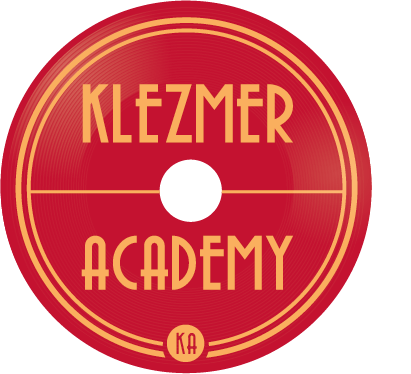September's tune will bring back memories of the early days of KlezKamp for those who were there. The long-running Yiddish Folk Arts program, which began in 1985 as a project of the YIVO institute in New York, was the first event to bring together, annually, those who were passionate about Yiddish culture. I first attended in 1987, knowing almost nothing except how much I wanted to learn.
In those early years, participants had the good fortune to hear and learn from the few remaining old masters of klezmer, Yiddish song and Yiddish theater, and first among those treasured elders was Sid Beckerman. The son of Shloimke Beckerman, a clarinet player who had recorded a number of 78 rpm discs for Emerson in the early 1920s, Sid was an incredibly sweet man who had lips of steel; especially in those early years, he would sometimes play for well over an hour without pause.
When I walked into the tantszal (ballroom) for the dance party on that very first Sunday night, I was blown away by the music. It was endless, it was exciting, and I knew I had found my place in the universe. One of the tunes that was being played that evening, among the first I heard and frequently repeated throughout the week, was a simple, two-part tune that seemed to hold within its 32 bars everything I already loved about the music. Here is a recording that I made that night using a portable cassette recorder.
I never learned the name of the tune or where it had come from; unlike many of the other freylekhs and bulgars I heard and played that week and in subsequent years, no one ever provided an original source recording. As far as I knew, it was just one of the tunes in Sid's repertoire.
Last week I was doing some systematic listening to the digital transfers of recordings in my collection, and imagine my delight when I came upon a soundfile of this very tune! It was Victor 25-5030, recorded in 1940 by Abe Ellstein's orchestra with Dave Tarras, and it was called "Bardichiver Nigun." The recording is interesting for a number of reasons. First, Tarras begins playing the first A section in the low register, something which, I can say from my own experience, is much more challenging to do expressively than playing in the usual clarinet register two octaves above. The second time through the tune, the trumpet, which has been almost a commentator on the melody, takes the lead for the second time through the A section.
It is, however, the melody itself which is most interesting. While both versions are clearly playing the same basic tune, they differ in some significant ways.
In the first half of the A section, the Beckerman version, notated in black, ends the first phrase at the third tone of the mode, while the Tarras version, in blue, stays at the tonic.
This pattern is repeated in the second phrase, in which the two versions end on the fifth and the third, respectively:
The second half of the section diverges more dramatically, with the Beckerman version (top staff) continuing for an additional two bars:
The B section exhibits similar disparity. In the Beckerman version, the first phrase is two bars long, with the second two bars representing a kind of elaboration upward, while the Tarras version again stays rooted firmly below, with the second phrase essentially restating the first:
And in the second half of the section, the lengths again do not match up, though in this case it is the Tarras version which extends the phrase, by repeating the cadence used at the end of the A section. This variation also involves a significant change in the harmony, with the Beckerman version going to the Fm cadence chord in the penultimate measure of the tune, while Tarras moves to Fm at the beginning of this section of the melody.
While I'm very happy to have heard the Tarras version of this tune and thrilled finally to know what it is called, the Beckerman version, heard at so many KlezKamps, is the one that I will always think of as the "original." I have, however, provided charts for both versions, along with the sound files, in the Resources section.







